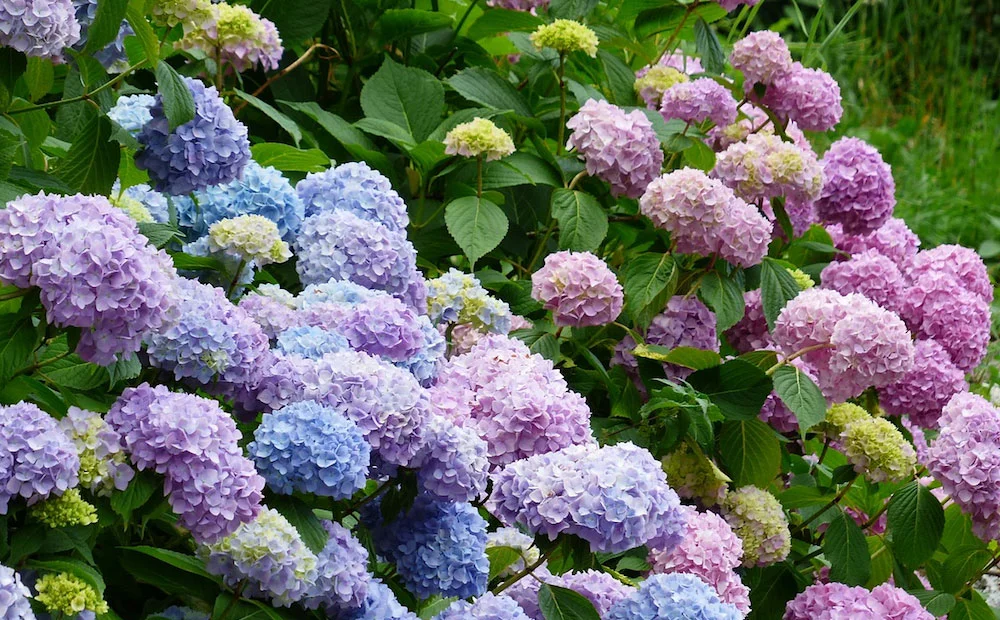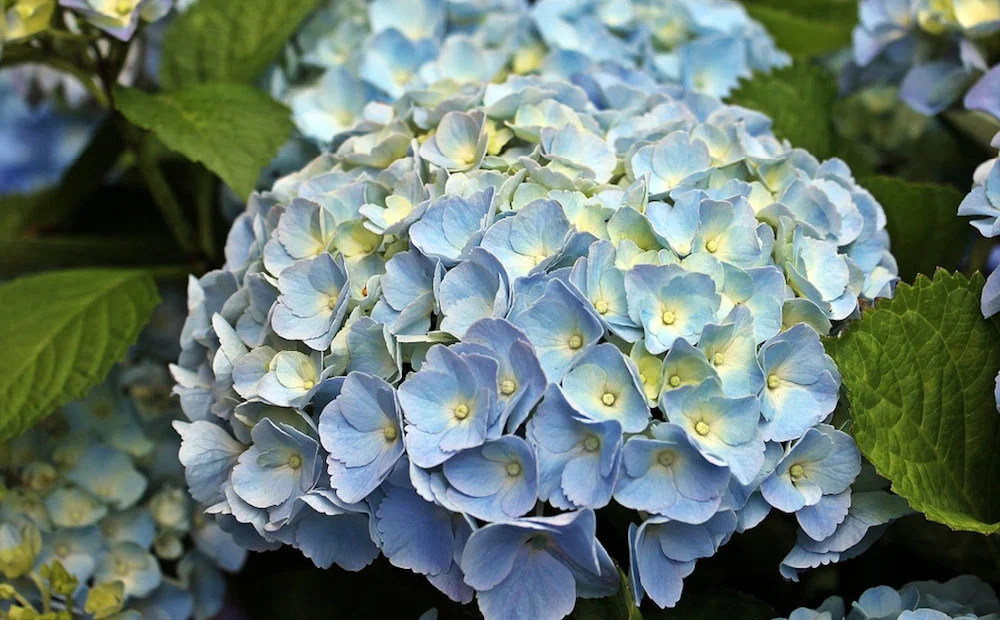HOW TO TURN YOUR HYDRANGEAS BLUE
Blue isn’t a prevalent color for flowering plants, which makes it pretty desirable to gardeners who want their landscape to stand out! Cool, blue tones are easy on the eyes and mingle well with other colors. On a cloudless day, blue accents will kick your garden up a notch, tying the landscape in with the sky for a gorgeous summer scene.
What you may not know is that you could have gorgeous blue hues already hiding in your garden, just waiting to show their true colors. In the right conditions, some species of hydrangeas have the ability to display that beloved, sought-after shade. Here’s how you can turn your hydrangeas from common pink to beautiful blue!
HYDRANGEA COLORS
Hydrangeas bloom in a variety of colors, so there’s guaranteed to be one that suits your garden aesthetic. You can choose from a variety of whites, greens, purples, pinks, blues and even variegated options. But when you hear of the magical, color-changing abilities of these enchanting plants, they’re actually talking about a specific variety called Hydrangea macrophylla, or “Bigleaf Hydrangea”.
Bigleaf hydrangeas are known to bloom in shades of pink, blue, or white. While white varieties will remain pure and untouched by color regardless of what you do, pink and blue hues can be influenced by the soil they grow in!
HOW TO TURN HYDRANGEAS BLUE
The secret to changing the color of hydrangea flowers isn’t what’s applied to the blooms themselves, it actually has to do with the chemistry of the soil. The more alkaline the soil is, the pinker the blooms will be. At neutral pH, some varieties remain pink while others will start showing hints of blue with lovely shades of lavender. Blue hydrangeas bloom in acidic soils, usually with a pH of 5.5 or less.
The easiest way to acidify your soil and turn those babies blue is with aluminum sulfate, which can be found at almost any garden center. Mix ¼ oz aluminum sulfate with a gallon of water and soak the soil surrounding your hydrangeas in the spring, as soon as the plant begins to grow. You’ll have to maintain that acidity throughout the growing season, so reapply in 4 weeks and again in 8 weeks.
Organic materials, such as coffee grounds, egg shells or citrus fruit peels are another, more natural method of making soils more acidic. Simply grind them up and work them into the ground. These changes will happen gradually, so it might take an entire year of doing this consistently for it to reach the right acidity.
TURNING HYDRANGEAS PINK
Chances are, you don’t actually have to turn your hydrangeas pink. Most blooms are already blushing at a neutral pH. Avoid adding aluminum-based products or acidic fertilizers, and you’ll be golden (rosy, actually). However, if your hydrangeas are showing a purple tinge, you can always add lime products to increase the alkalinity and get them back to a perfect pink.
Remember, flower color isn’t going to change overnight. There’s a reason that blue hydrangeas are a hot commodity! It’s a slow process that takes time and patience, but with some diligence, you can create the perfect, acidic conditions that blue-hued hydrangeas love.





